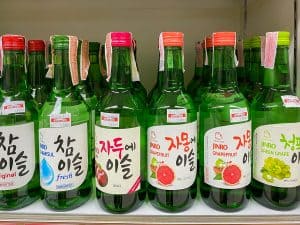
Drinking a glass of wine to relax after a long day or pairing it with your favorite dish is a treat for the mind, body, and soul.
And the health benefits of wine have been studied in depth by various health professionals publishing studies focusing on a single chemical compound to look at the overall health benefits.
But what is the healthiest wine to drink?
Dry red wines are your healthiest wine options. A single serving (between four and five ounces) per day is all you need to reap the benefits of the ruby red wines. Red wines are especially good for your veins and heart and can help your brain stave off Alzheimer’s disease.
We will look at the healthiest dry red wines and their health benefits, and we have a little surprise for you as well. So, read on to discover what red wine can do for you and the surprise entry.
How Much Is a Healthy Serving?

The advantages of red wine are undeniable, but when consumed in excess, the benefits lessen or disappear, and health risks increase.
A serving is approximately 4 to 5 ounces. Men and women over 65 can usually enjoy the health advantages of one serving per day.
In contrast, men under 65 can tolerate twice the daily recommendation (5–10 ounces). Moderation is key. The idea is to combine wine consumption with nutritious meals and an active lifestyle.
Dry Red Wines

Red wines are the healthiest option because they contain more antioxidants than any other variety.
The grapes are pressed whole, and the skins aren’t removed during fermentation providing the antioxidants such as procyanidins which have been linked to heart health and possible longevity.
Let’s look at the healthiest red wine options for your next serving of health-in-a-glass.
Malbec
Malbec is at the top of the list. When compared to other grapes, malbec grapes have substantially thicker skins.
These thick skins are high in antioxidants, including resveratrol, related to immunological and heart health.
This wine is a well-known product from Chile and Argentina. The unusual weather creates a unique interplay between warm Pacific Ocean air and chilly winds from the Andes mountain range, generating the ideal environment with temperature and moisture patterns.
The soil is exceptionally dense and low in sulfates, giving Malbec wine a distinct flavor and health advantages.
Pinot Noir
Almost every wine-producing continent grows pinot noir grapes.
The name is derived from two French words, which translates to ‘pine’ and ‘black’—the grapes are almost black in appearance, and the bunches are tightly packed, resembling a pinecone.
Pinot noir wine begins its fermentation journey with some of the lowest sugar levels, making it a good choice for individuals watching their sugar consumption.
It also aids in the battle against bad cholesterol (LDL) due to the presence of antioxidants such as anthocyanins and procyanidins.
A glass of pinot noir has 640 milligrams of resveratrol per four-ounce serving, which is unrivaled by most other red wines.
Cabernet Sauvignon
As one of the most famous wines in the world, cabernet sauvignon also packs a good punch of health benefits.
Apart from cardiovascular and artery health, cabernet sauvignon also contains a unique mix of flavonoids, which contain a chemical that stimulates the production of a protein called the amyloid precursor—a significant role-player in neural cell health.
Not only does cabernet sauvignon help your brain, but it also contains a chemical that kills certain oral bacteria that can cause tooth cavities.
Cannonau
Cannonau, often known as Grenache in French, is a grape variety native to the Italian island of Sardinia.
As their thick skins develop during the growing and ripening season, the grapes generate large amounts of polyphenols and anthocyanins due to their late ripening and harvesting dates.
Other health advantages include collagen activity in the skin, protection from the sun’s damaging UV rays, aiding in the battle against premature aging, and alleviating symptoms connected with Alzheimer’s disease, arthritis, and diabetes. Catechins and quercetin, two flavonoids, are responsible for these health advantages.
These wines are also DOC-certified, so they must adhere to strict quality controls such as production, age, and quality criteria.
Sardinia is home to one of the world’s five Blue Zones, where people live significantly longer lives, have better health, and have better relationships—a definite cause to pour a glass every night, we’d say.
Orange Wines

There is orange wine in addition to dry red wines.
No, orange wines are not produced from oranges but refer to the color of the wine having an orange tinge. The orange hue is caused by lignin in the seeds.
Orange wines are white wines made in the same manner as red wines, with the skins and seeds remaining in touch with the pressed juices for anything from a week to almost a year.
These wines contain no additional sugar, and yeast is sometimes wholly removed from the fermentation process, resulting in a wine that tastes somewhat sour and nutty.
The skins provide a lot of antioxidants, which is why this is a healthy white wine.
Conclusion
We’ve looked at the following dry red wines: Malbec, pinot noir, cabernet sauvignon, and the star of them all, Cannonau.
Each one has unique health benefits, and when consumed in moderation, they can benefit your veins, heart, and brain.
Our surprise entry, orange wine, is a white wine option for those who do not like red wines much. It may not have as many antioxidants as red wine, but you can still reap the benefits.









